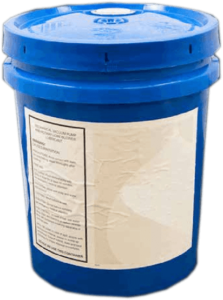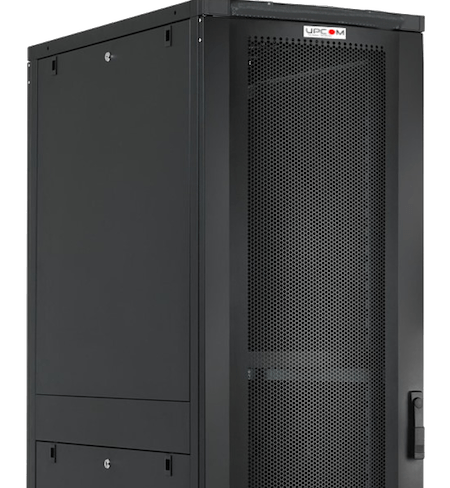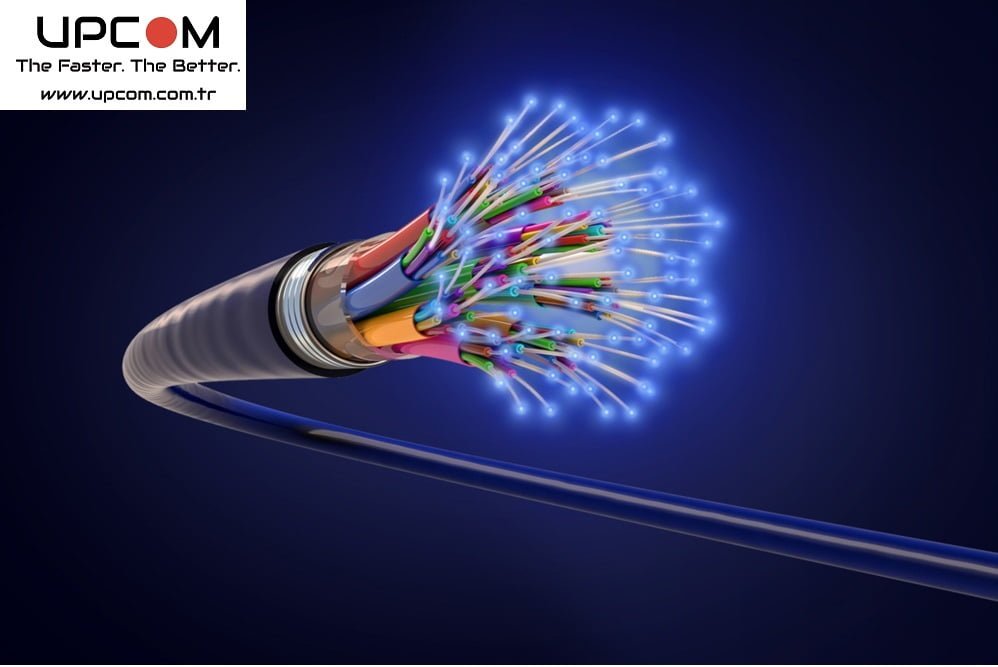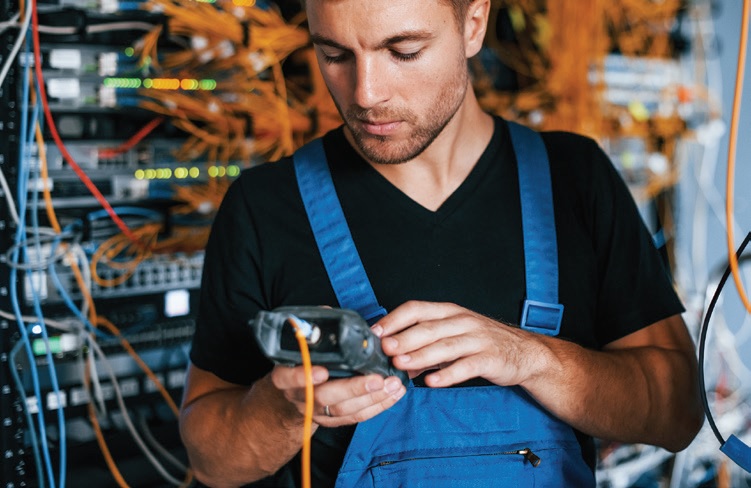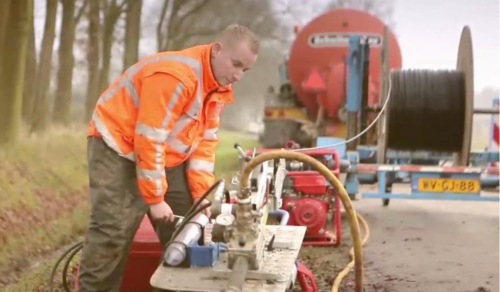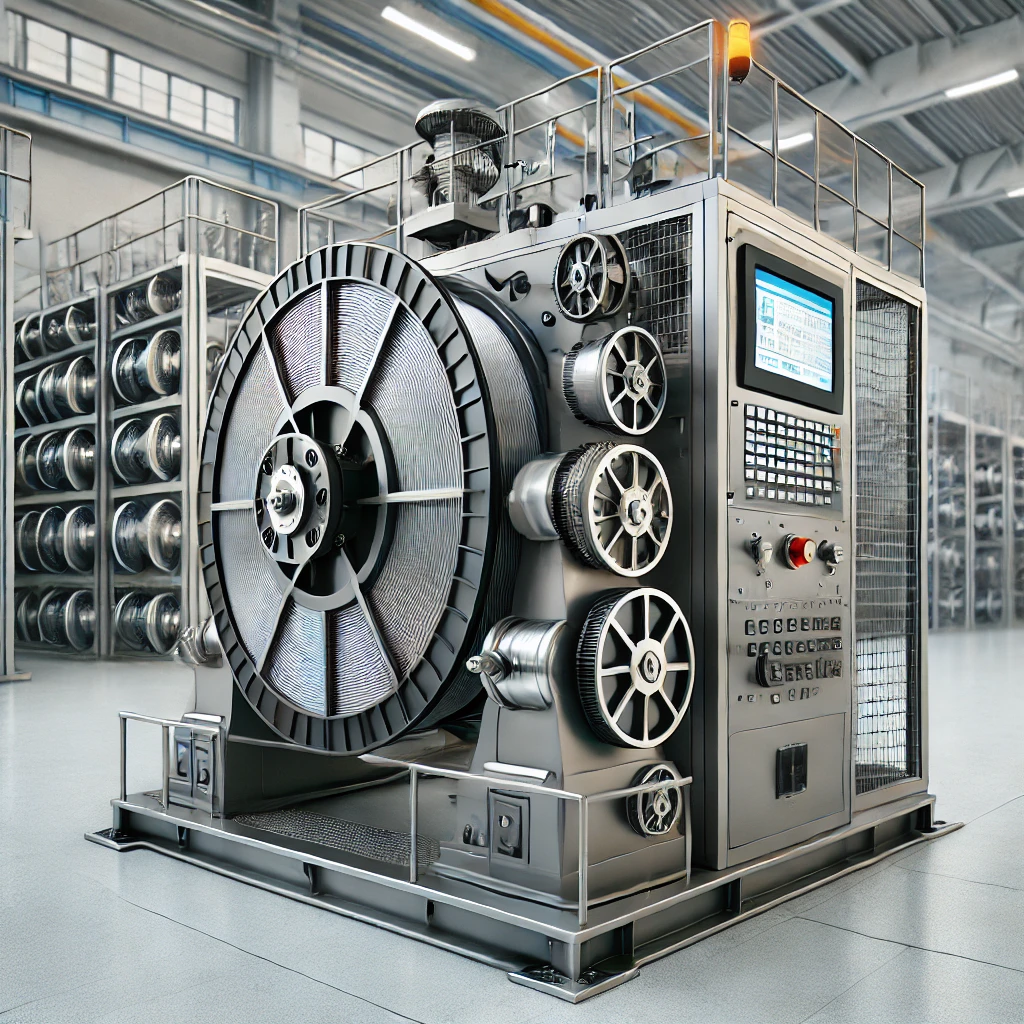22 Jan Cable Blowing Lubricant
Cable blowing lubricants are specially formulated lubricants used to lubricate cables as they are being pulled through conduits or other tight spaces during the installation process. The lubricant is applied to the cables before they are pulled, and it helps to reduce friction and make the installation process smoother and more efficient.
Cable blowing lubricants are designed to meet the specific needs of different types of cables, and to provide protection against abrasion, corrosion and high temperatures. They are commonly used in telecommunications, power generation and transportation industries.
There are different types of cable blowing lubricants available, such as silicone lubricants, petroleum-based lubricants, and synthetic lubricants. They can be applied using different methods, such as pumps, sprayers, brushes or rollers.
It is important to use the correct amount of lubricant and to follow the manufacturer’s instructions for proper use. Also, it is recommended to consult the cable manufacturer’s specifications or consult with a cable expert to determine the appropriate lubricant for a specific cable, especially if the cables will be installed in a hazardous area.
What type of lubricant is allowed to service a cable?
The type of lubricant that is allowed to service a cable depends on the cable’s specifications and the environment in which it will be used. Generally, cable lubricants should be non-toxic, non-corrosive, and able to withstand the temperatures and pressures that the cable will be exposed to. Some common types of cable lubricants include silicone lubricants, petroleum-based lubricants, and synthetic lubricants. It is important to consult the cable manufacturer’s specifications or consult with a cable expert to determine the appropriate lubricant for a
What are the tips about lubricant usage at a cable blowing procedure?
Here are some tips for using cable blowing lubricant during a cable blowing procedure:
- Consult the cable manufacturer’s specifications: Before using a cable blowing lubricant, consult the manufacturer’s specifications to ensure that the lubricant is compatible with the specific type of cable that will be used.
- Clean the conduit or other tight space: Before applying the lubricant, make sure the conduit or other tight space is clean and free of debris.
- Apply the lubricant correctly: Depending on the type of lubricant and the equipment being used, apply the lubricant using the appropriate method. Some lubricants are applied using a pump or sprayer, while others are applied using a brush or roller.
- Use the right amount of lubricant: The lubricant should be applied in the right amount to ensure proper lubrication without causing damage to the cable.
- Follow safety guidelines: Cable blowing lubricants can be flammable, toxic or harmful to the environment. Follow all safety guidelines and regulations when using cable blowing lubricant.
- Clean up excess lubricant: After the cables have been installed, the conduit or other tight space should be cleaned up, and any excess lubricant should be removed.
- Check the lubricant before each use: Make sure that the lubricant is still good for use, check the expiration date and storage conditions.
- Keep records: Keep records of the lubricant used, date of application, and any issues encountered.
By following these tips, you can ensure that the cable blowing lubricant is used correctly and that the cables are installed safely and efficiently. Remember to always consult the cable manufacturer’s specifications or consult with a cable expert to determine the appropriate lubricant for a specific cable.
What is cable lube (Lubricant) used for?
Cable lube, also known as cable lubricant, is used to reduce friction and wear on cables during installation and operation. It is applied to the cables before they are pulled through conduits or other tight spaces to make the installation process smoother and more efficient. Additionally, the lubricant helps to protect the cables from damage caused by abrasion and corrosion. This can help to prolong the life of the cables and improve their performance. Cable lubricants are commonly used in a variety of industries, such as telecommunications, power generation, and transportation.
What are the advatanges and disadvantages of lubricant?
Cable blowing lubricants have several advantages and disadvantages:
Advantages: -Reduces friction: Cable blowing lubricants help reduce friction between the cable and the conduit or other tight space through which it is being pulled. This makes the installation process smoother and more efficient. -Protects the cable: Cable blowing lubricants can help protect the cable from damage caused by abrasion, corrosion and high temperatures. This can help to prolong the life of the cable and improve its performance. -Ease of application: Some lubricants can be easily applied using pumps, sprayers, brushes or rollers, making the application process simple and quick.
Disadvantages: -Cost: Cable blowing lubricants can be relatively expensive, especially if they need to be used in large quantities. -Environmental concerns: Some types of lubricants may be harmful to the environment and may not be suitable for use in certain areas. -Maintenance: Lubricants can attract dust and debris, requiring more frequent cleaning and maintenance. -Incompatibility: Not all lubricants are suitable for all types of cables, so it’s important to ensure that the lubricant is compatible with the specific type of cable that will be used. -Improper use: If not applied correctly or in the wrong quantity, lubricants can cause damage to the cable and reduce performance.
It is important to weigh the advantages and disadvantages of cable blowing lubricant when considering its use. It is always best to consult the cable manufacturer’s specifications or consult with a cable expert to determine the appropriate lubricant for a specific cable, and to follow the manufacturer’s instructions for proper use.
What are the important points at choosing the right cable blowing lubricant?
When choosing a cable blowing lubricant, it is important to consider the following factors:
- Compatibility with the cable: Not all lubricants are suitable for all types of cables. It is important to ensure that the lubricant is compatible with the specific type of cable that will be used.
- Operating conditions: The lubricant should be able to withstand the temperatures, pressures, and environmental conditions that the cable will be exposed to during its operation.
- Viscosity: The lubricant should have the right viscosity to ensure easy application and good lubrication.
- Non-toxicity and non-corrosiveness: The lubricant should be non-toxic and non-corrosive to ensure safety and protection.
- Ease of application: The lubricant should be easy to apply using the equipment and techniques that will be used during the installation process.
- Cost-effectiveness: The lubricant should be cost-effective, without sacrificing performance and safety.
It is always best to consult the cable manufacturer’s specifications or consult with a cable expert to determine the appropriate lubricant for a specific cable. This will help ensure that the cables are installed safely and efficiently and have the longest possible service life.
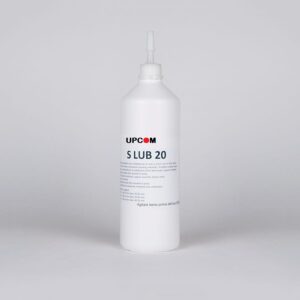
cable blowing lubricant – UP-S-LUB-20
What is the Importance of Lubricant for a succesful Cable Blowing and installation?
Lubricant is an essential component of a successful cable blowing and installation process, as it helps to reduce friction and protect the cables from damage. Here are some of the key reasons why lubricant is important for cable blowing and installation:
- Reduces Friction: Cable blowing lubricants help to reduce the friction between the cable and the conduit or other tight space through which it is being pulled, making the installation process smoother and more efficient.
- Protects the Cable: Lubricant can help to protect the cable from damage caused by abrasion, corrosion and high temperatures, extending the life of the cable and improving its performance.
- Improves Efficiency: By reducing friction and protecting the cable, lubricant can help to improve the efficiency of the installation process, reducing the risk of damage to the cable and saving time and money.
- Increases Safety: Proper use of lubricant can help to reduce the risk of accidents during the installation process and minimize the risk of damage to the cable.
- Cost-effective: Using the right lubricant can help to reduce the cost of installation and maintenance of the cable, as well as prolonging the life of the cable.
It is important to use the correct lubricant and to follow the manufacturer’s instructions for proper use. It is always best to consult the cable manufacturer’s specifications or consult with a cable expert to determine the appropriate lubricant for a specific cable and to ensure a successful cable blowing and installation process.
International Standards and Compliances for Cable Blowing Lubricants
There are several international standards and compliance regulations that cable blowing lubricants must meet in order to be used in cable installation projects.
One important standard is the ISO 6743-9 standard, which specifies the classification and requirements for lubricants used in the telecommunications industry. This standard includes requirements for the lubricant’s viscosity, specific gravity, and lubricating properties.
Another important standard is the IEC 61034 standard, which sets guidelines for the smoke density and toxicity of cable lubricants. This standard is important for ensuring that cable lubricants do not produce excessive smoke or toxic fumes in the event of a fire.
In addition to these standards, cable lubricants must also comply with local and regional regulations regarding the use and disposal of lubricants. For example, many countries have regulations in place to limit the use of lubricants that contain hazardous chemicals or that are not biodegradable.
It’s important to check the specifications of the lubricant you are using, and if it’s compliant with local and international standards to ensure that it’s safe and suitable for use in your specific application.
Maintenance and Storage Instructions of Cable Blowing Lubricants
Maintenance and storage of cable blowing lubricants is important to ensure that the lubricant remains effective and safe for use. Here are some general guidelines for maintaining and storing cable blowing lubricants:
- Store lubricants in a cool, dry place, away from direct sunlight and heat sources. Extreme temperatures can affect the lubricant’s viscosity and effectiveness.
- Keep lubricant containers sealed to prevent contamination from dust, dirt, or other foreign particles.
- Avoid storing lubricants near chemicals or other materials that may react with or contaminate the lubricant.
- Check the lubricant’s expiration date and discard any lubricant that has expired.
- When dispensing lubricant, use clean, approved equipment to prevent contamination.
- Properly dispose of any used or contaminated lubricant in accordance with local, regional, and national regulations.
It’s important to follow the manufacturer’s instructions for the specific lubricant that you are using, as different lubricants may have different storage and maintenance requirements.
Also, regular monitoring of lubricant’s condition for example, viscosity, color, smell, will help to ensure that the lubricant is still safe to use. It’s also good practice to keep a record of lubricant usage, such as the date of purchase, batch numbers and expiration dates, which could be helpful in case of any issues.

Cable Blowing Lubricant UP-S-LUB-100XL
How to use cable blowing lubricant?
Cable blowing lubricants are used to lubricate cables as they are being pulled through conduits or other tight spaces during the installation process. The lubricant is applied to the cables before they are pulled, and it helps to reduce friction and make the installation process smoother and more efficient. Here are some general steps for using cable blowing lubricant:
- Clean the conduit or other tight space where the cables will be pulled through: Before applying the lubricant, make sure the conduit or other tight space is clean and free of debris.
- Apply the lubricant: There are different ways to apply cable blowing lubricant, depending on the type of lubricant and the equipment being used. Some lubricants are applied using a pump or sprayer, while others are applied using a brush or roller.
- Pull the cables: Once the lubricant has been applied, the cables can be pulled through the conduit or other tight space. The lubricant will help to reduce friction and make the process smoother and more efficient.
- Clean up: After the cables have been installed, the conduit or other tight space should be cleaned up, and any excess lubricant should be removed.
It is important to use the correct amount of lubricant and to follow the manufacturer’s instructions for proper use. Also, it is recommended to consult the cable manufacturer’s specifications or consult with a cable expert to determine the appropriate lubricant for a specific cable, especially if the cables will be installed in a hazardous area.
Can we use the same cable blowing lube for all diameter of cables?
Different types of cables have different lubrication requirements, and it is not recommended to use the same cable blowing lubricant for all size of cables. Cable lubricants are formulated to meet the specific needs of different types of cables and different environments in which they are used.
The diameter of the cable can also affect the lubricant requirements. Larger cables may require more lubricant to reduce friction and protect the cable from damage, while smaller cables may require less lubricant. Also, some types of cables may require different formulations of lubricant to provide the necessary level of protection, especially if the cables will be installed in a hazardous area.
It is important to consult the cable manufacturer’s specifications or consult with a cable expert to determine the appropriate lubricant for a specific cable. Using the wrong lubricant can damage the cables or reduce their performance. Using the right lubricant can help to prolong the life of the cables and improve their performance.
At UPCOM product portfolio, we have several cable blowing lubricant.
UP – S LUB 100XL – Type of cable or piping fiber optic duct internal diam size from 4 to 12 mm
UP – S LUB 20 – Type of cable or piping fiber optic duct internal diam size:15 to 50 mm
Cable blowing lubricants are specialized lubricants used in the telecommunications industry to facilitate the installation of cables through conduits. It is important to follow proper safety guidelines when handling and using these lubricants to minimize the risk of injury or damage.
Here are some general safety instructions for cable blowing lubricants:
- Always read the lubricant’s Material Safety Data Sheet (MSDS) before using to understand the hazards and precautions associated with the product.
- Wear appropriate personal protective equipment (PPE) such as gloves, goggles, and a respirator mask when handling or using the lubricant.
- Keep lubricants away from heat sources, open flames, and other sources of ignition as they may be flammable or combustible.
- Avoid skin or eye contact with lubricants, and wash any skin that comes in contact with the lubricant immediately with soap and water.
- Do not ingest or inhale lubricants, as they may be toxic if ingested or inhaled in large amounts.
- Ensure proper ventilation when using lubricants in enclosed areas to prevent the buildup of harmful fumes.
- Dispose of used or contaminated lubricants in accordance with local, regional, and national regulations to protect the environment.
- Keep the lubricant in a secure place, and away from children and pets.
It’s important to follow the manufacturer’s instructions for the specific lubricant that you are using, as different lubricants may have different safety requirements. If you’re unsure about how to handle or use a lubricant, always consult with a professional.
Can you use white lithium grease on cables?
White lithium grease can be used on cables in certain situations, but it is not recommended as a general-purpose cable lubricant. White lithium grease is a type of lubricant that is commonly used on mechanical parts, such as bearings and hinges, to reduce friction and protect against rust and corrosion.
However, cable lubricants and white lithium grease have different formulation and properties. White lithium grease is thicker, and it can be too thick to be used effectively on cables, making it difficult to apply and more likely to attract dust and debris. Also, it may not be able to withstand the same pressure and temperature range as cable lubricants.
The use of white lithium grease on cables may reduce the performance of the cable and cause damage, especially if the cables are exposed to high temperatures, pressure or harsh environmental conditions. It is always best to consult the cable manufacturer’s specifications or consult with a cable expert to determine the appropriate lubricant for a specific cable.
Can you use dish soap as wire lube?
Dish soap can be used as a temporary solution for lubricating wires, but it is not recommended as a long-term lubricant. Dish soap is a type of detergent, and while it can help to reduce friction and make it easier to pull wires through tight spaces, it is not specifically formulated for use on cables and wires.
Dish soap also does not have the same properties as cable lubricants and may not provide the same level of protection against corrosion, abrasion and high temperatures. Additionally, it may not be able to withstand the same pressure and is not suitable for all types of cables.
It is important to use lubricants that are specifically formulated for use on cables, as using the wrong lubricant can damage the cables or reduce their performance. It is always best to consult the cable manufacturer’s specifications or consult with a cable expert to determine the appropriate lubricant for a specific cable.
11 reasons why the future belongs to fiber optic
11 Reasons Why the Future Belongs to Fiber Optic “The future belongs to fiber optics!” This bold claim is backed by compelling reasons. Fiber optic technology is not just an upgrade—it’s a transformative infrastructure shaping how we connect, communicate, and consume information. Here are 11......
19″ Rack Cabinet
What is a 19” Free Standing Rack Cabinet? 19” free standing rack cabinets provide a robust, cost-effective enclosure solution. PDU mounting or connectivity on both the front and rear of the cabinet. The Free Standing 19” Rack cabinets are ideal for high-density data center environments,......
5 Fan Facts About the Fiber Optic Cables
Fiber optic cables are a type of cable that use glass or plastic fibers to transmit data. Here are some interesting facts about fiber optic cables: Speed: Fiber optic cables are capable of transmitting data at much faster speeds than traditional copper cables. This makes......
Advancements in Fiber Optic Technology: Improving Bandwidth and Transmission Rates
Fiber optic technology has revolutionized the way we communicate, providing faster and more reliable data transmission over long distances. The use of fiber optic cables has become increasingly popular in recent years, and the technology continues to evolve at a rapid pace. In this article,......
All about fiber optics
What does a fiber optic cable do? A fiber optic cable is a type of cable that uses glass or plastic threads to transmit data. These threads, or fibers, are extremely thin and are surrounded by a protective coating. They are able to transmit data......
Best Fiber Optic Cabling Installation Practices Guide
Fiber optic cabling installation is a complex process that requires specialized knowledge and equipment. Here are some best practices for fiber optic cabling installation to ensure a successful and reliable installation: Plan the Installation: Before starting the installation, it is important to plan......
Cable Blowing by Pressurized Air / Fiber Optic Cable Blowing Procedure
Cable Blowing (Sometime called air assisted cable blowing, Cable Blowing by Pressurized Air, air blowing, jetting and all these words are describing method of cable blowing with pressurized air) Cable Installation has been always a challenge for installers. There are several method to lay the......
Cable Blowing Lubricant
Cable blowing lubricants are specially formulated lubricants used to lubricate cables as they are being pulled through conduits or other tight spaces during the installation process. The lubricant is applied to the cables before they are pulled, and it helps to reduce friction and make......
Cable Blowing Machine work
Cable Blowing Machines here Click here to find out Cable Blowing Machine Product Portfolio Click Here Cable blowing machines, also known as a jetting machine or fiber optic cable blowing machine, is a device used to blow cables, such as fiber optic cables, into ducts......
Cable Spooling Machines: The Ultimate Guide to Efficient Cable Handling
In industries such as telecommunications, energy, manufacturing, and infrastructure, the need for Cable Spooling Machines have never been greater. Traditional manual spooling methods can lead to inconsistencies, labor-intensive processes, and increased cable damage. This is where cable spooling machines revolutionize operations by ensuring precise, automated, and......


